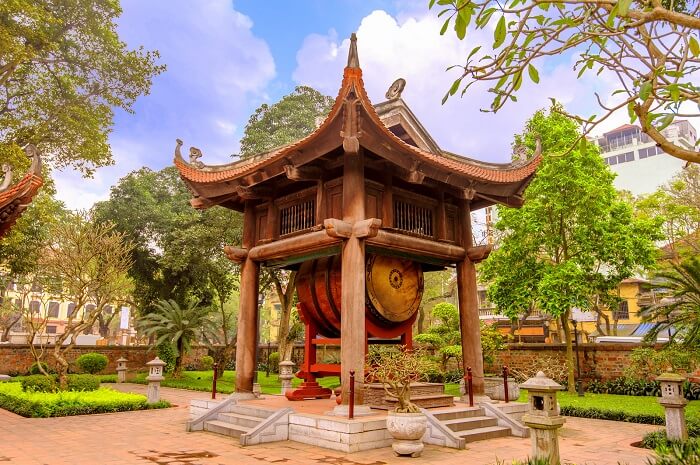Vacation attractions in Hanoi today by hanoibylocals.com

High quality travel attractions Hanoi today: A place of pilgrimage for many Vietnamese, the Ho Chi Minh Mausoleum is a sprawling complex set within the city’s gardens that contains the tomb of Ho Chi Minh as well as various museums and monuments. The actual mausoleum itself is an austere marble building where Ho Chi Minh’s embalmed body sits in a glass case. Also within the complex is the Ho Chi Minh Museum, which has an eclectic collection containing Ho Chi Minh’s personal memorabilia as well as plenty of information on the history of the Vietnamese Revolution. Also worth a visit is the stilt house, once home to Ho Chi Minh, which is excellently preserved, and the One Pillar Pagoda. This pagoda is a reconstruction of the original 11th century temple, which was destroyed by French colonial troops. See extra info on Hanoi By Locals.
Behind Ho Chi Minh’s Mausoleum is a humble stilt house, where Ho Chi Minh supposedly lived in the 60s, though some claim that it would have been too risky during the war for him to live here. The house is an interpretation of a traditional rural dwelling, and has been preserved just as Ho left it. It’s set in a well-tended garden next to a carp-filled pond. It shares grounds with the much more luxurious and impressive Presidential Palace built for the French Governor of the Indochina colony in the early 1900’s. The palace is now used for official receptions and isn’t open to the public.
Established in 1889, Dong Xuan Market is housed within a four-storey Soviet-style building on the northern edge of Hanoi Old Quarter. It’s also known as Hanoi’s largest indoor market, offering a wide range of goods such as fresh produce, souvenirs, accessories and clothing, as well as electronic and household appliances. Dong Xuan Market has a bustling wet market section on the ground floor, where locals shop for seafood, meat, and vegetables while the back section sells an array of pets (cats, dogs, and fish) and fresh flowers from all across Vietnam. If you’re looking to shop for souvenirs, head to the upper levels, where you can find numerous stalls selling tee shirts, fabrics, school uniforms, handbags, handicrafts, all of which are sold at wholesale prices.
This largest urban lake is a favorite location for tourists and Hanoi residents alike. It is where the high-end homes of Hanoi’s wealthy live, and contains a large number of hotels, restaurants, and luxury shops as well. It has been a popular location for residents here for thousands of years, and is home to one of Hanoi’s four sacred temples, as well as the oldest pagoda in the city. This pagoda, dating back to the sixth century, can be found on an island in the center of the lake. Boating, sightseeing, and shopping along the boardwalk are common activities here, and well worth the trip.
When the crowds begin to wear you down, Hanoi has a bundle of places to visit where you can escape for some peace. Hoan Kiem Lake is a relaxing respite right within the city, while the Temple of Literature and Vietnam Museum of Ethnology are two of the best places to visit to reflect on Vietnam’s grand history. For many visitors to Vietnam’s capital, the major attraction is strolling the streets of the city’s ancient core. This labyrinthine quarter of narrow alleys is the commercial heartbeat of town and has a history that stretches back 1,000 years. It’s a delightfully dilapidated place, where the odd piece of medieval era architecture has managed to cling on within the modern hubbub of whizzing motorbikes, street vendors, and pulsating commerce. Discover more info at https://hanoibylocals.com/.
The Imperial Citadel of Thang Long, is an intriguing relic of Vietnam’s history and, signifying its historical and cultural importance, was made a UNESCO World Heritage Site in 2010. Also known as the Hanoi Citadel, many artefacts and items dating back to between the 6th and 20th centuries were excavated in 2004, including foundations of old palaces, ancient roads, ponds and wells, bronze coins, ceramics and pottery from China and many places in Asia. The ancient site was the political centre of the country for 13 consecutive centuries and served as the capital of Vietnam for eight centuries. A notable attraction in the Imperial Citadel of Thang Long was the Hanoi Flag Tower, a renovated 40-metre-tall stone fortress offering expansive views of Ba Dinh Square and Hanoi City Centre.